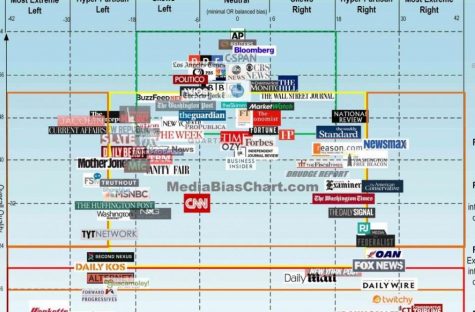The Bias of Biased Bias
December 2, 2019
Within Issaquah High School, it is common knowledge that we live in what is considered a bubble. One is able to go through a majority of their high school career without having literally any knowledge politically, or is able to totally ignore much of the news that is plastered across phones, televisions, and other forms of media. Americans believe 39 percent of the news they see on television, read in the newspapers or hear on the radio is misinformation; and they estimate that nearly two-thirds of the news they see on social media is misinformation. However, as one nears closer and closer to senior year and the ripe age of 18, the nation we call home allows those considered adults to perform the civic duty of voting. While voting registration is not required and neither is voting itself, with the upcoming presidential election, the news is becoming more important than ever. And as news becomes more viewed and more important, it tends to change in order to fit certain viewpoints and biases in an effort to appeal to those who constantly consume the media and to draw in those who are more fluid on certain hot issues.
One good source for the educated and concerned news reader is a handy dandy chart of media bias:

Did you find your favorite news channel or site here?
Be aware of the political perspective of the sources used in a story. Media over-relies on “official” (government, corporate and establishment think tank) sources. For instance, FAIR found that progressive and public interest voices were grossly underrepresented. Political coverage often focuses on how issues affect politicians or corporate executives rather than those directly affected by the issue. For example, many stories on parental notification of abortion emphasized the “tough choice” confronting politicians while quoting no women under 18–those with the most at stake in the debate. Economics coverage usually looks at how events impact stockholders rather than workers or consumers.
But what about Issaquah High? According to freshman Emily Burles, “If I am going to look at the news, I definitely look at more than one source, and I try to not stick to a single source for a long time.” Burles is already practicing a way to avoid bias, even if she might not realize it. Checking multiple sources is a good way to look at a story from various and different perspectives. According to senior Nicole Lee, “I would definitely credit AP Government with Mrs. Belur as a huge help in my education on the news, It’s really strange to have changed my perspective so much.” Lee is a self proclaimed history student, but loves how much AP Government focuses on current events and what is happening in the world right now. Lee also says “If you want to really figure out how our government works, I would totally recommend the class. It really opened my eyes and cleared up a lot of confusion about how stuff works.” However, it is high school after all, and constantly paying attention to the news is not quite necessary yet for many of the students. According to junior Weston Crewe, “I do not really feel like I have to pay a ton of attention to the news yet, and I know when I get older I will, but nowadays I want to spend my time listening to music and stuff.”
In this changing world of media and news, and with how often the words “fake news” are being thrown around, it feels like anything and everything is impossible to trust. However, with a few tricks and a little time, keeping one’s self updated and knowledgeable about what is happening in the world can be viable.

